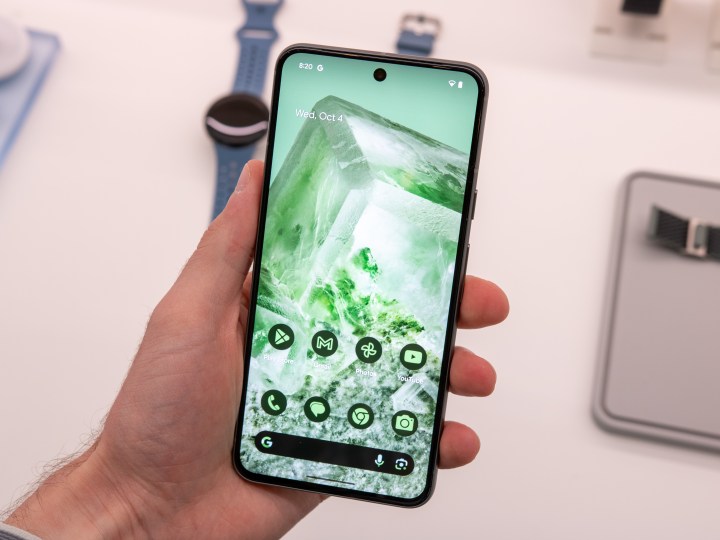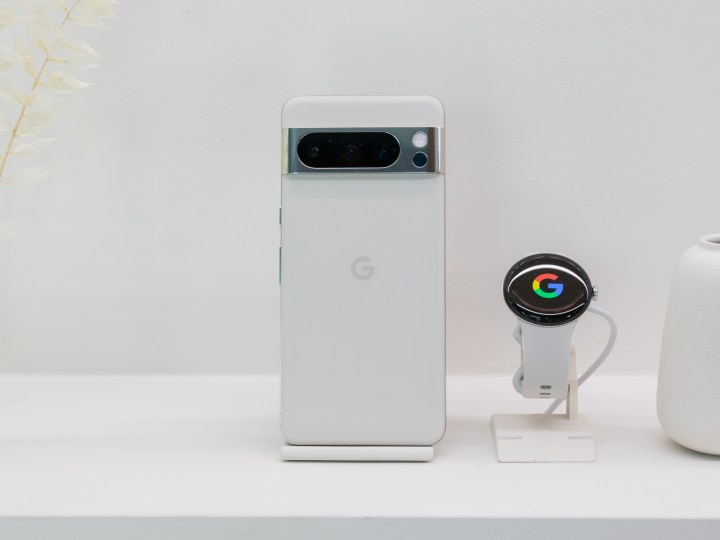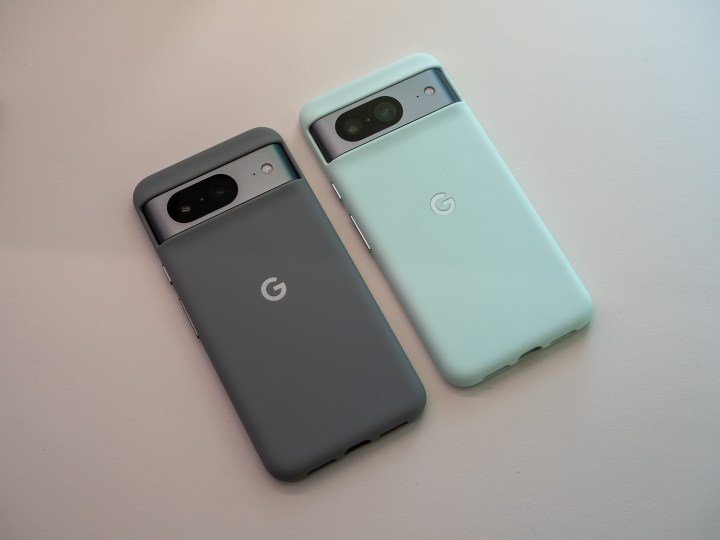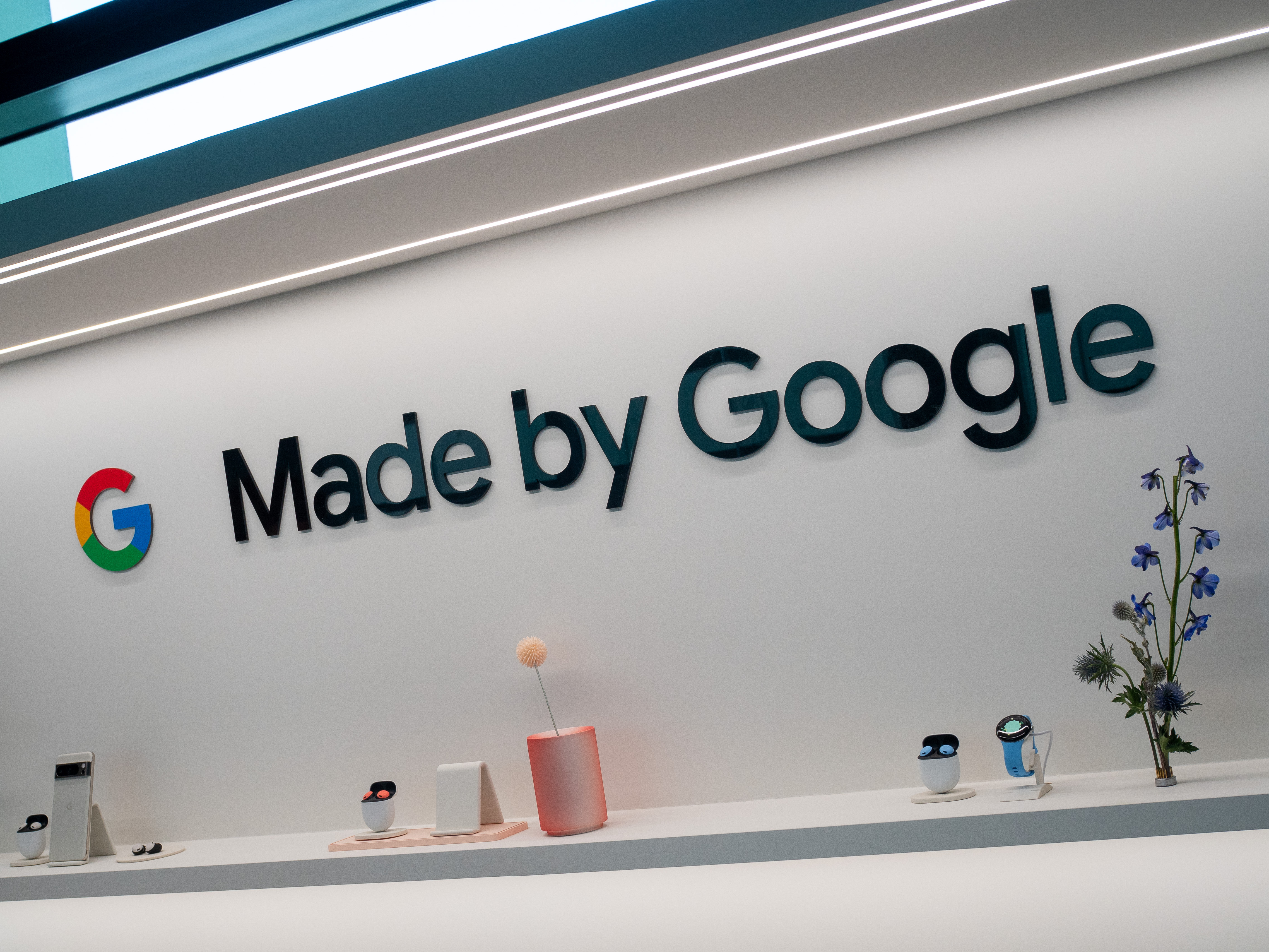
The speculation and leaks are over, and the new devices have been officially revealed. The Made By Google event for October 2023 has left us with three amazing new devices and one incredible feat of software engineering that’s sure to be the talk of all smartphone and technology lovers for the next few months. Yes, while the Google Pixel 8, Pixel 8 Pro, and Pixel Watch 2 may have been the hardware stars of the show, it’s the Best Take mode that really took our breath away.
Missed the show? Don’t worry, we didn’t, and we’ve put together this roundup to make sure you’re not missing out on Google’s latest and greatest smartphones, smartwatch, and incredible software tricks. Here’s everything announced at the big Made By Google Pixel 8 event!
Best Take
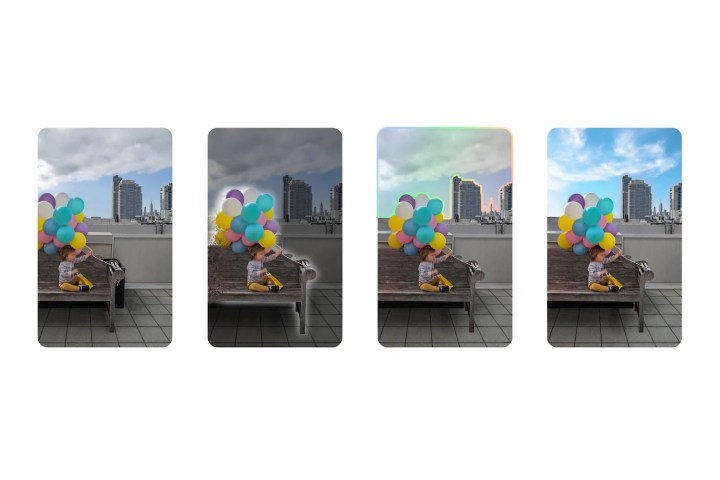
What is Best Take? Simply put, it’s the spiritual successor to Magic Eraser. But it’s also so, so much more. Best Take constitutes a seismic shift in how we take photos with our smartphones, and we’re sure to look back on this launch as a major moment in the years to come.
Best Take is simple, really, but can be a little tricky to explain in print. Have you ever had one of those group pictures where one person’s face isn’t quite right? Perhaps they smiled at the wrong time, or something caught their attention, or they were doing it on purpose (children are particularly good at this last one). Either way, your photo isn’t quite perfect, and that’s just annoying.
Enter Best Take, which uses a series of photos to create a single blended image. So, it can identify if you’ve taken a number of different images of the same scenario or people, and it can take specific elements of one to add to another. In short, it can take better headshots from different images and put them together into a single image. It’s basically automated Photoshop, but for your phone, and it’s sure to be a huge game changer for Instagram lovers and many others.
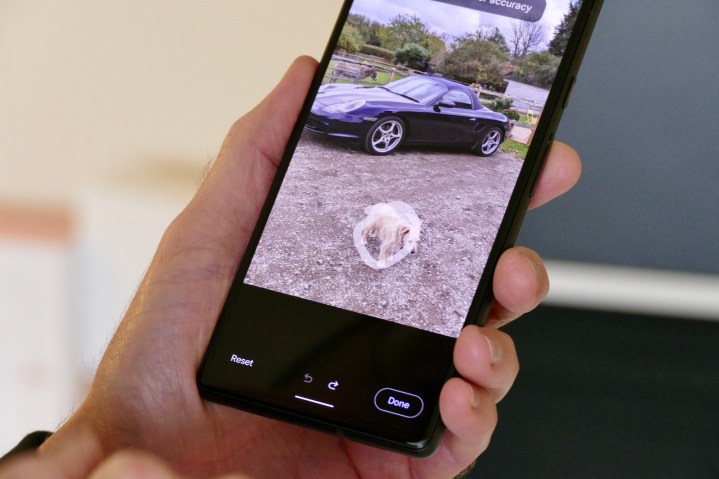
Best Take works best when combined with Google’s other software tricks, of course. At the top of that pile is the Magic Eraser, which uses machine learning to remove small elements from an image, like people in the background. That’s now been upgraded to the Magic Editor, which takes the concept even further. The Magic Editor can remove bits of a photo as the Eraser did, but it can also move them around and change the lighting of the entire shot, among other things.
All of these new features need some new and powerful hardware to run them though, which brings us to the new Pixel phones. Outwardly, there’s little difference between the Pixel 8 Pro and Pixel 8 and last year’s Pixels. But you’d be wrong if you think that means Google has phoned it in, as new hardware and features are the headline additions to this year’s Pixels.
Google Pixel 8 Pro
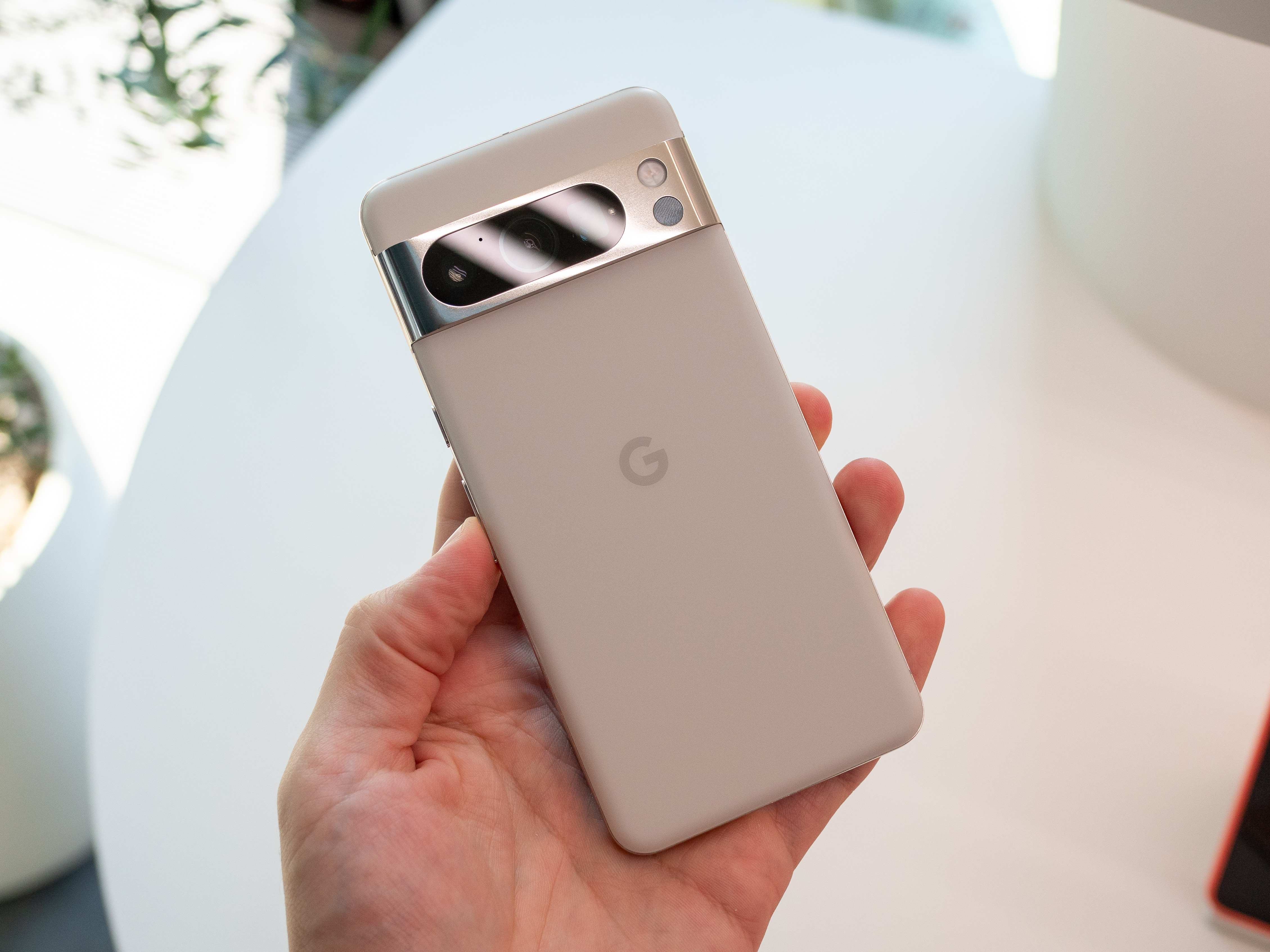
Just want the best Pixel around? Then we’ll save you some time: The biggest, fastest, and most advanced Pixel is now the Google Pixel 8 Pro. It’s the tip-top of what Google can offer in a smartphone, and it’s where you’ll find the most new features and hardware.
The Google Tensor G3 chipset is a key part of this new phone, and it’s an upgrade across the board, with increases for the CPU, GPU, and processing technology. It needs that additional grunt too, as the machine learning model on the Pixel 8 is 10x larger than the machine learning library on the Pixel 6, which makes sense considering the G3 is powering more advanced spam filters, more natural conversations with the Google Assistant, new Magic Editor features, and more. Joining that processor is 12GB of RAM and the choice of 128GB, 256GB, 512GB, or 1TB of storage.
The design is largely the same this year, but the display isn’t. The Pixel 8 Pro has the same 6.7-inch display in terms of size, but the underlying tech has changed dramatically. The Pixel 8 Pro now has a Super Actua OLED screen, with a variable refresh rate of 1Hz to 120Hz, a 2992 x 1344 resolution, and a maximum brightness of 2,400 nits.
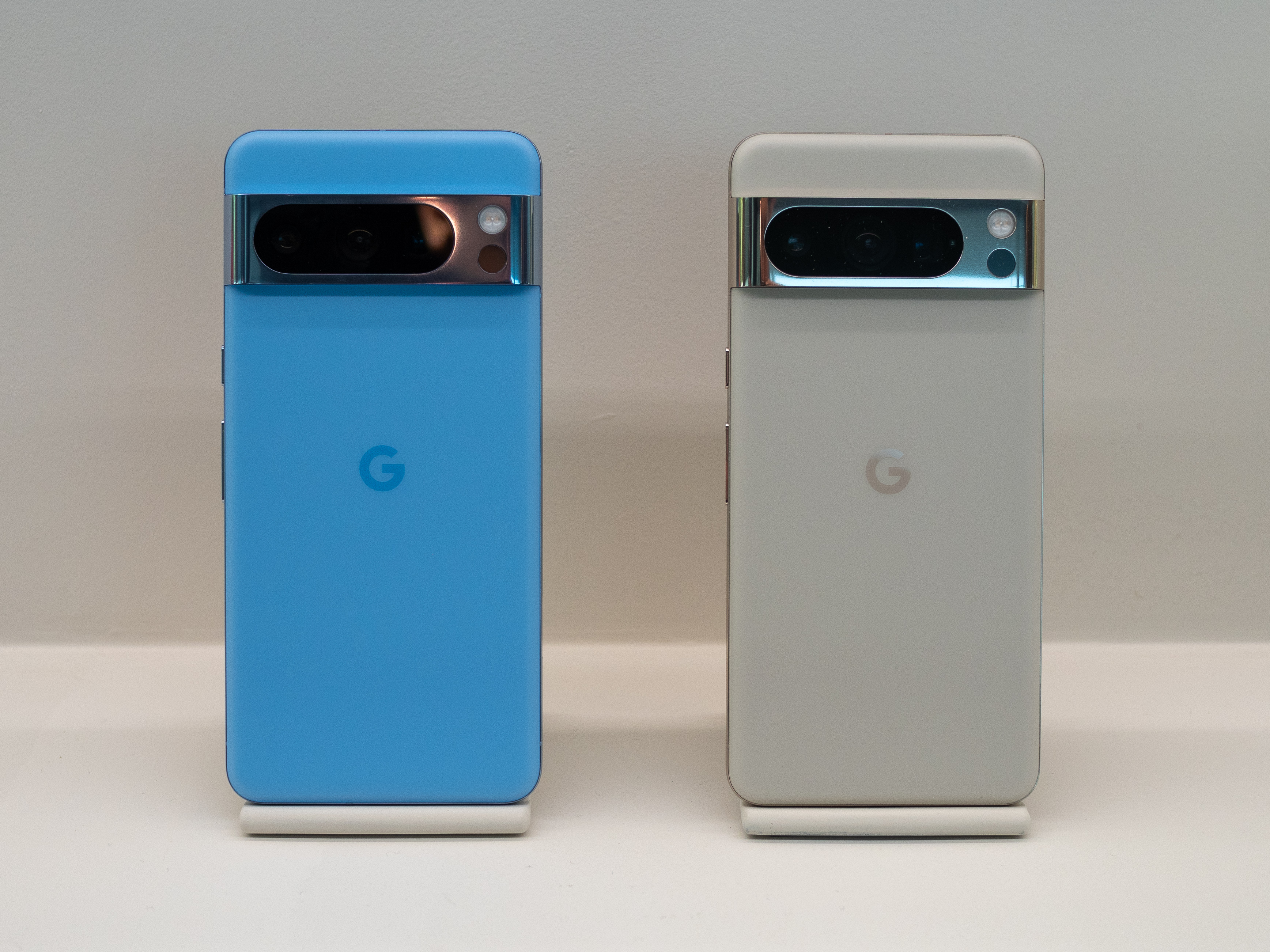
The camera is always a highlight on a Pixel phone, and this year is no different. The triple-lens setup on the back of the Pixel 8 Pro is similar to previous years, but with some small tweaks, as well as one fairly large one. The main lens and ultrawide lens are largely the same as last year, a 50-megapixel and 48MP lens, respectively, but the telephoto lens has seen a big upgrade. It’s gone from a 12MP lens to 48MP, bringing it into the same ballpark as the other two lenses. It’s still a periscope zoom lens with a 5x optical zoom, so the utility hasn’t changed, just the amount of detail on offer. Will this make a difference? We’ll have to wait until we’ve had a chance to play with it, but Google rarely missteps with its cameras. Around the front, there’s a 10.5MP selfie camera.
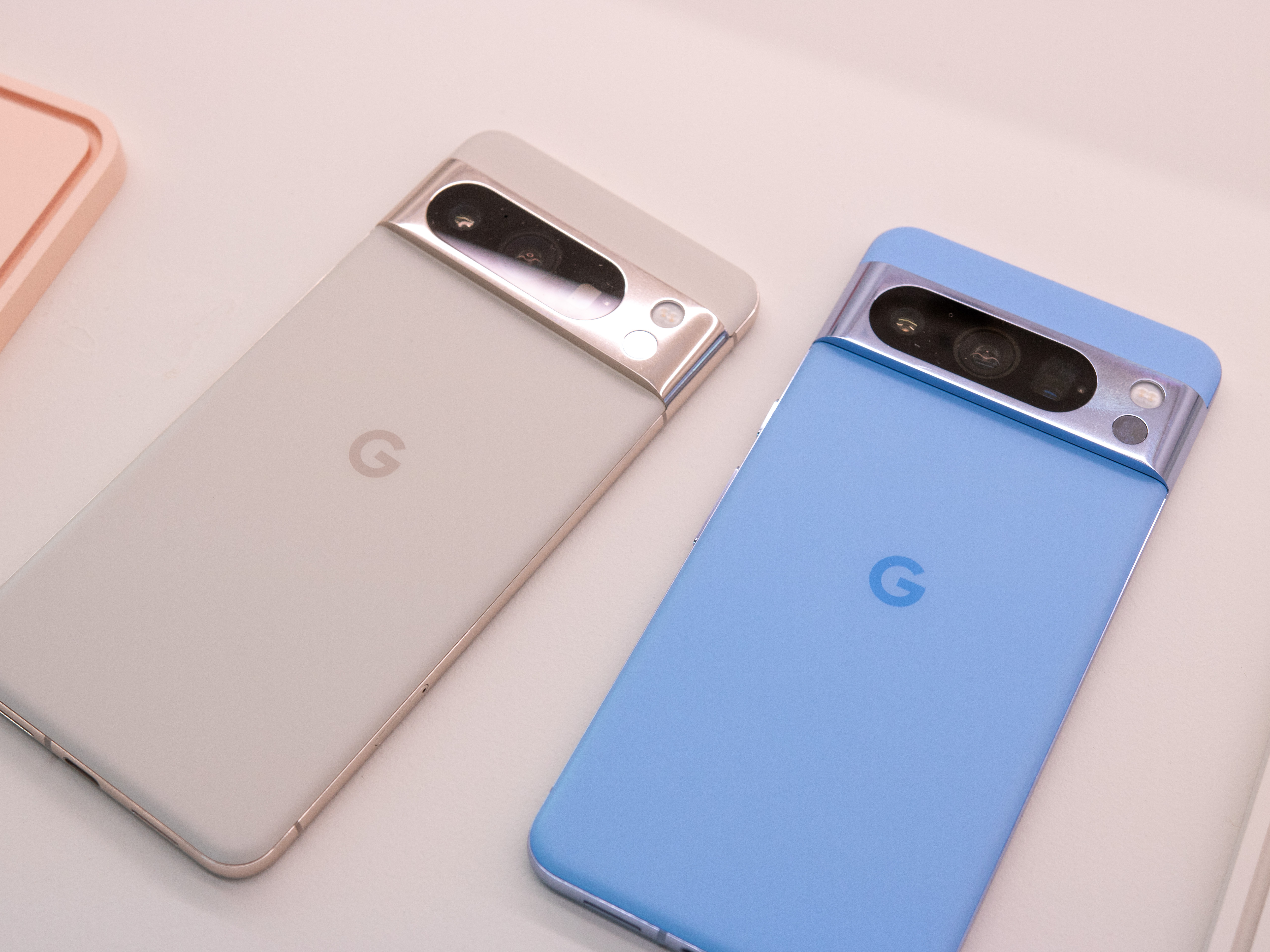
The Pixel 8 Pro also has an odd new feature: a temperature sensor. Using this new sensor, you’ll be able to measure the temperature of objects around you, and — pending Food and Drug Administration (FDA) approval — you’ll even be able to take your temperature and log it to your Fitbit account.
The battery is slightly larger than on last year’s Pro model, but since we’re dealing with new hardware, there’s no real telling what the battery life is likely to be. While a day’s worth of battery life is expected and hoped for, it could go either way. The Tensor processors have traditionally struggled with battery life, so it’ll be interesting to see whether Google has fixed this.
The Google Pixel 8 Pro is available for preorder starting October 4 and will go on general sale on October 12. The Pixel 8 Pro is the more expensive of the two phones launched at the Made By Google event, coming in at $999. That’s a $100 increase over last year’s Pixel 7 Pro, by the way.
Read more about the Google Pixel 8 Pro
Google Pixel 8

As is tradition, the Pixel 8 Pro comes alongside a cheaper, lower-powered alternative. But don’t make the mistake of thinking the Google Pixel 8 isn’t a powerful flagship in its own right, as this phone only has a few small omissions compared to the Pixel 8 Pro.
First, it’s smaller. The Pixel 8 is the Pixel phone of choice if you want a powerful, but smaller flagship Pixel with a 6.2-inch Actua OLED display. The Pixel 8’s display isn’t as impressive as the Pro’s, but it’s close. The Pixel 8’s OLED display has a variable 60Hz to 120Hz refresh rate, a 2400 x 1080 resolution, and a peak brightness of 2,000 nits, bringing it close to the Pro’s Super Actua display. The narrower refresh rate is the biggest drop here, as it doesn’t have the low refresh rates that can potentially boost the battery life. However, it still has a 120Hz refresh rate, which means it’ll feel smoother and silkier than the Google Pixel 7.

It’s just as powerful, though. The Pixel 8 has the same new Google Tensor G3 processor and 8GB of RAM. The choices for storage aren’t as large, though, as you only get the choice between 128GB or 256GB. It would have been nice to see 512GB of storage as an option for media lovers, but 256GB is still a good amount for most people. The battery is just a touch bigger than last year, so we’re expecting to see similar battery life. Unlike last year’s Pro model, the Pixel 7 provided strong battery life, so we’re hoping for the same again here.
The Pixel 8 is equipped with a dual-lens rear camera, and while some may miss the utility of a telephoto lens, there’s still plenty to love here. Google has retained the excellent 50MP main lens and 12MP ultrawide lens from the Pixel 7, and we’re expecting these to be just as great as last year. Like the Pixel 8 Pro, the Pixel 8 also has a new 10.5MP selfie lens around the front, replacing the most disappointing element of last year’s phone.
The Google Pixel 8 starts at $699, which is again $100 more than last year’s Pixel 7. Preorders opened on October 4, and the phone will ship on October 12.
Read more about the Google Pixel 8
Google Pixel Watch 2
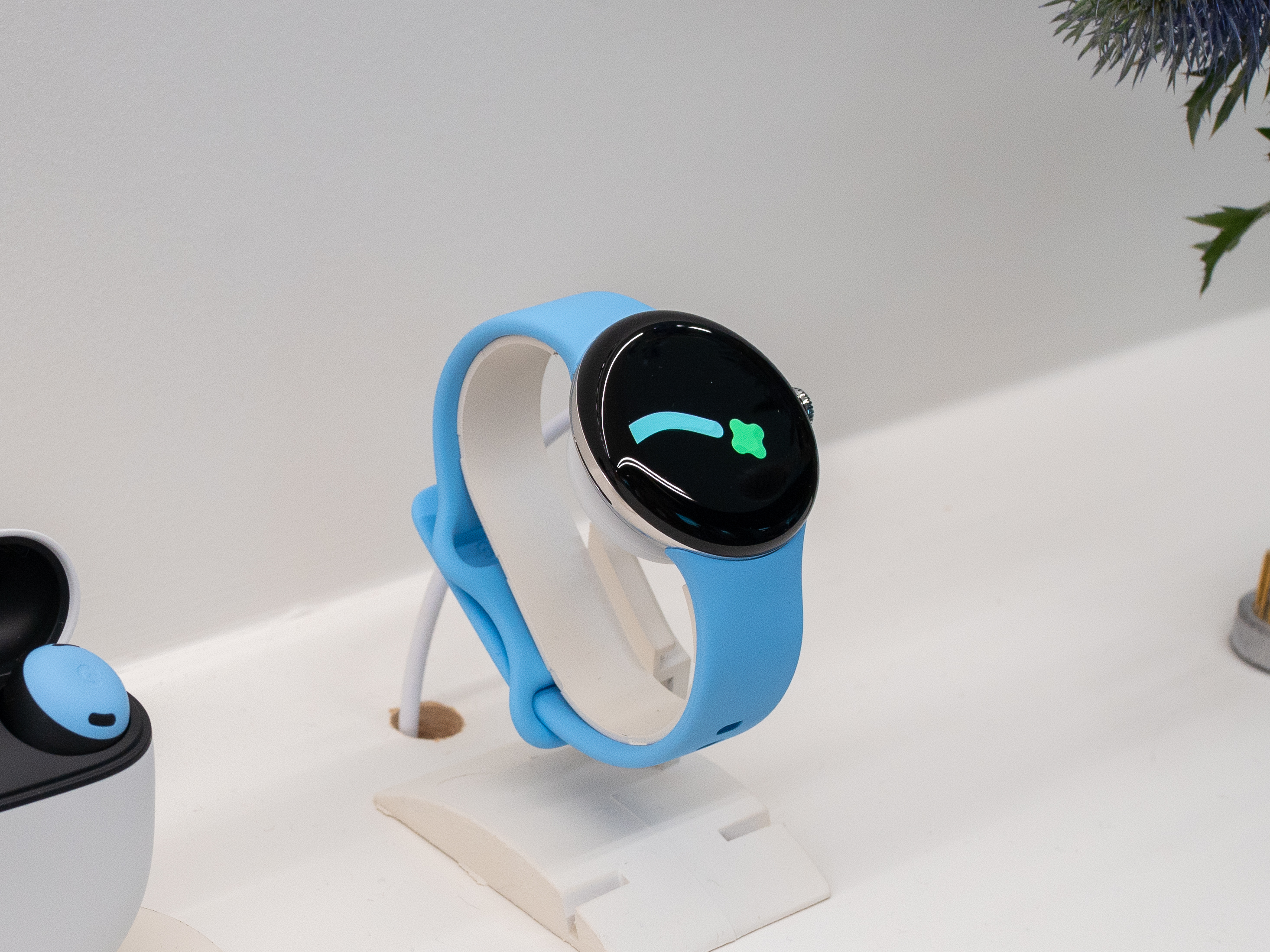
The Google Pixel phones aren’t launching alone, as they’ve brought a friend with them. The Google Pixel Watch 2 was a big part of the Made By Google event, and a lot of what Google has added to the Pixel Watch 2 echoes across the Pixel range, including new features for personal safety, stress tracking, and a skin temperature sensor.
Yes, the Pixel Watch 2 may be built off the back of Fitbit’s excellent fitness tracking, but it seems Google is working hard to make this smartwatch more than just a Fitbit smartwatch. Google’s services are built into the watch, so you get access to your Google Calendar, Assistant, Gmail, and more. The domed display’s style is uniquely Pixel, and the entire watch is now 10% lighter than last year’s model, making it easier to wear all day — which is, incidentally, how long Google claims the battery will last. The first Google Pixel Watch was a “one-day-and-a-bit” watch too, but hopefully, Google has eked out some extra juice from the small cell.
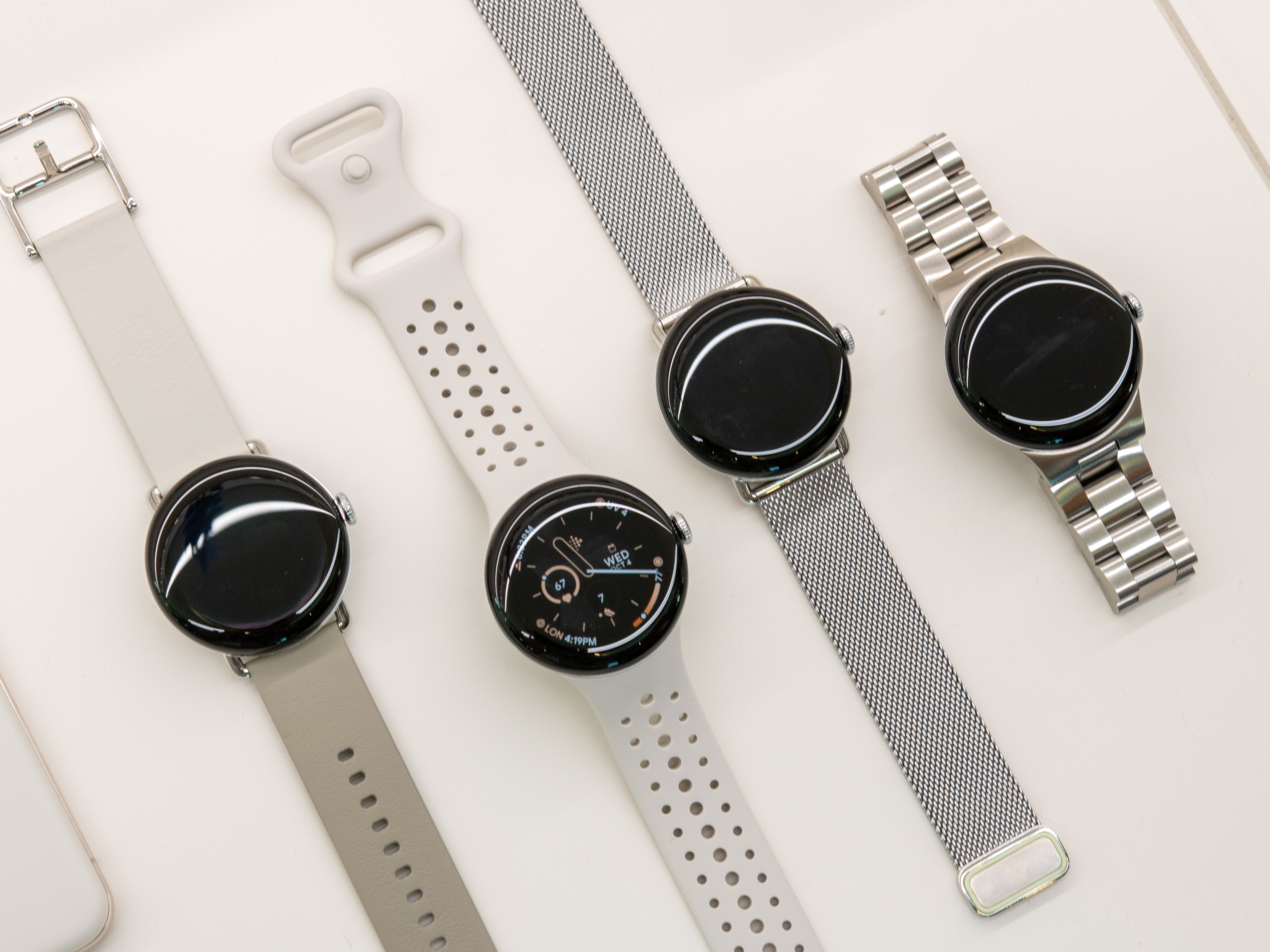
Safety and personal wellness are a big focus for Google, and the Pixel Watch 2 is going to be the crux of this. Fall Detection and Emergency SOS are both returning, and Google has also included a new Safety Check tool that will use a timer to alert friends and family of your location. So, if it normally takes you 10 minutes to get home, and your timer is running over that estimate, your Pixel Watch 2 will share a live location with your emergency contacts. Fitbit Premium members get even more coverage, with Safety Signal giving phone-free connectivity, even if you don’t have an LTE watch.
That Fitbit lineage runs deep, and that’s no bad thing. If fitness is your bag, you’ll find plenty to love here, even if the watch is not as feature-rich as a dedicated fitness tracker. It has the most accurate heart rate tracker Fitbit has ever used, support for a number of automatically tracked activities, and there’s also Heart Rate Zone coaching and Pace Training if you’re looking to keep your effort and speed within certain boundaries. Like the Pixel 8 Pro, the Pixel Watch 2 also has a skin temperature sensor, which will be used in conjunction with existing stress-tracking measures to make accurate predictions of your stress level at any time.
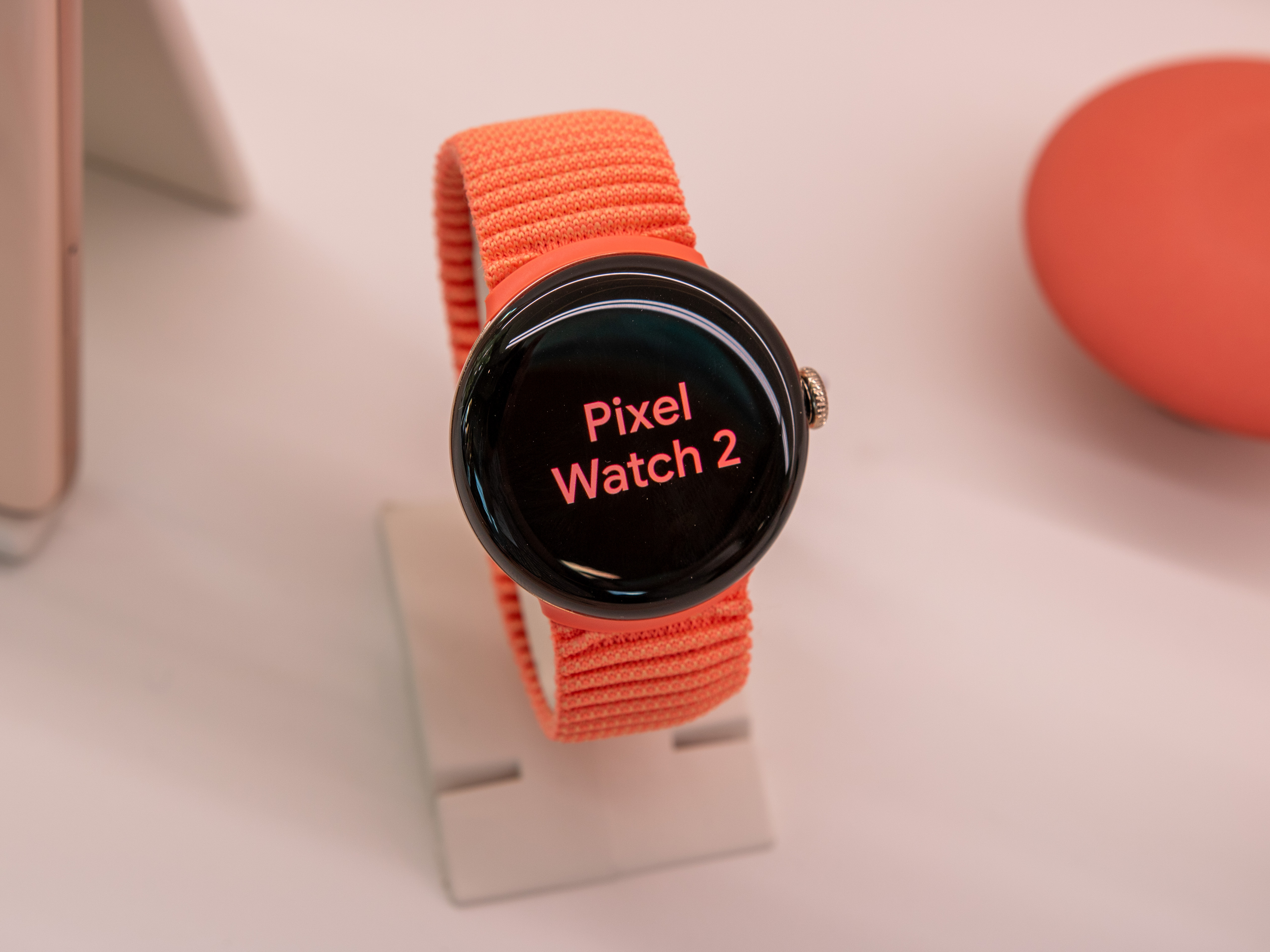
The first Google Pixel Watch was a bit of a disappointment, so the Pixel Watch 2 has its work cut out for it. Thankfully, it seems like Google has taken a lot of criticism on board and is hoping to get back on the right foot with the Pixel Watch 2.
The Google Pixel Watch 2 will be available for preorder starting October 4 and be released on October 12. The Wi-Fi variant will cost $349, while an LTE-connected watch will set you back $399. Each Pixel Watch 2 will come with six months of Fitbit Premium membership for free.
Read more about the Google Pixel Watch 2
Pixel Buds Pro
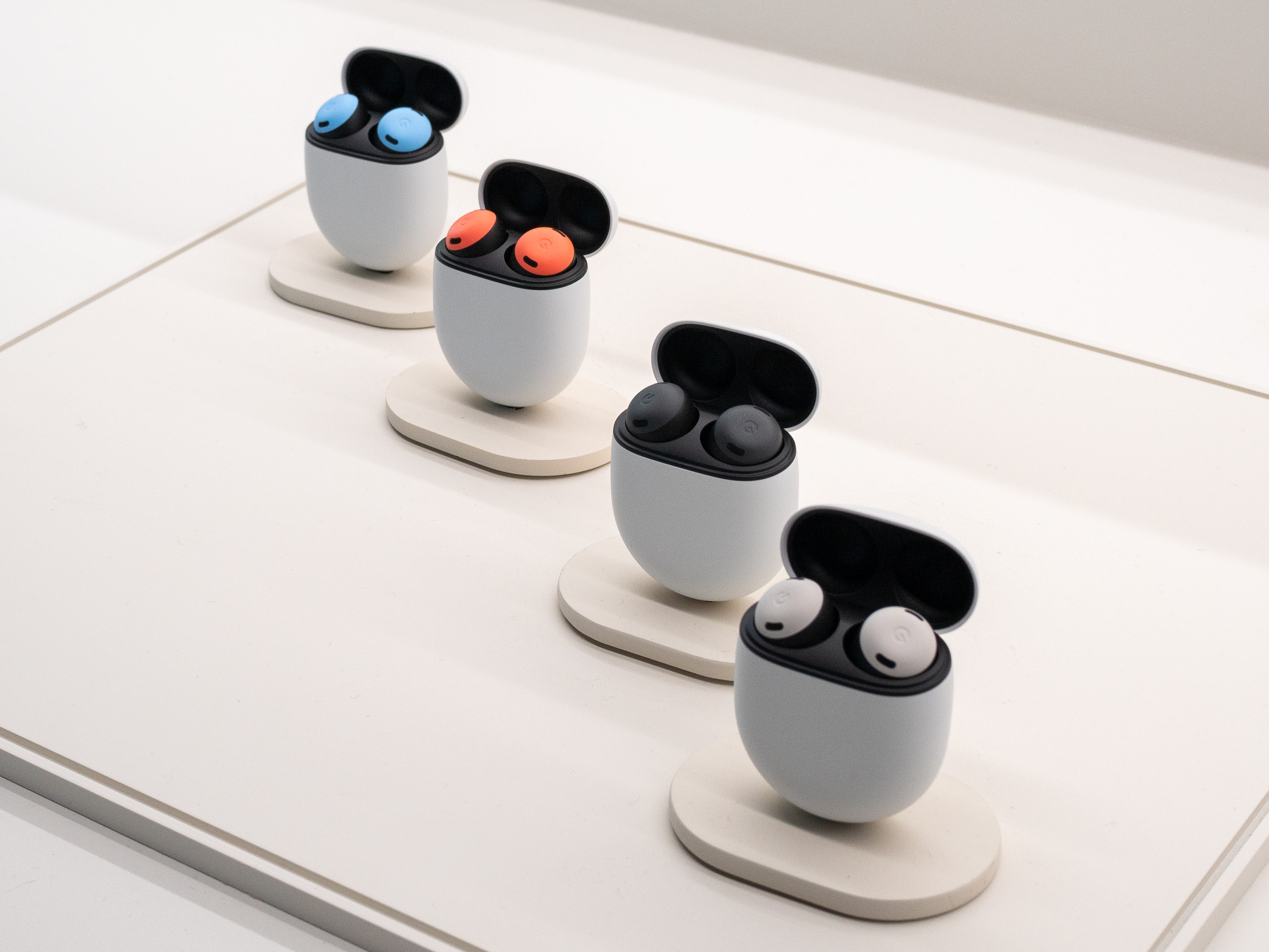
While the Pixel Buds Pro aren’t changing, there are some new features and a set of new colors to get excited about. The new Porcelain and Bay Blue colors match the Pixel 8, Pixel 8 Pro, and Pixel Watch’s colors, so you can coordinate all your new tech. Google also detailed some software changes that will arrive in an update available starting October 4.
Google’s AI is hard at work in the two top features, Clear Calling and Conversation Detection. Clear Calling works with the Pixel 8 and Pixel 8 Pro’s Bluetooth Super Wideband connection and reduces background noise to make calls sound clearer and more natural. Conversation Detection automatically pauses music playing through the Pixel Buds Pro and activates Transparency mode when it hears another person talking to you.
Another feature that relies on the Pixel 8 series phones is lower latency for audio over Bluetooth when playing a game, while Google has also released a specific Pixel Buds app for Chromebooks. Finally, through its app, you will get recommendations on how to protect your hearing over time.
Assistant with Bard

Google’s popular virtual assistant is getting Bard’s generative and reasoning AI capabilities, which you’ll be able to access using voice, text, or images on both Android and iOS devices. Google says you’ll be able to do some incredible things, such as using Assistant with Bard to contextually craft a social media post related to an image you provide, as well as working with common Google apps like Gmail and Docs, all in a conversational way. At this time, Assistant with Bard is described as an experimental feature, and is only available to a group of early testers, but it will be coming to Android and iOS phones in the coming months.
Editors' Recommendations
- 5 smartwatches you should buy instead of the Google Pixel Watch 2
- 5 phones you should buy instead of the Google Pixel 8
- Google Pixel Watch 3: news, rumored price, release date, and more
- 5 phones you should buy instead of the Google Pixel 8 Pro
- Have a Google Pixel phone? You’re about to get these new features

